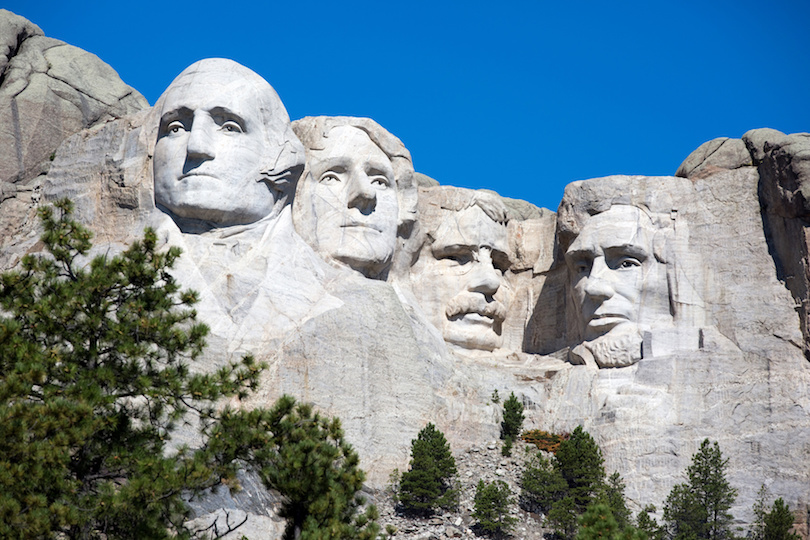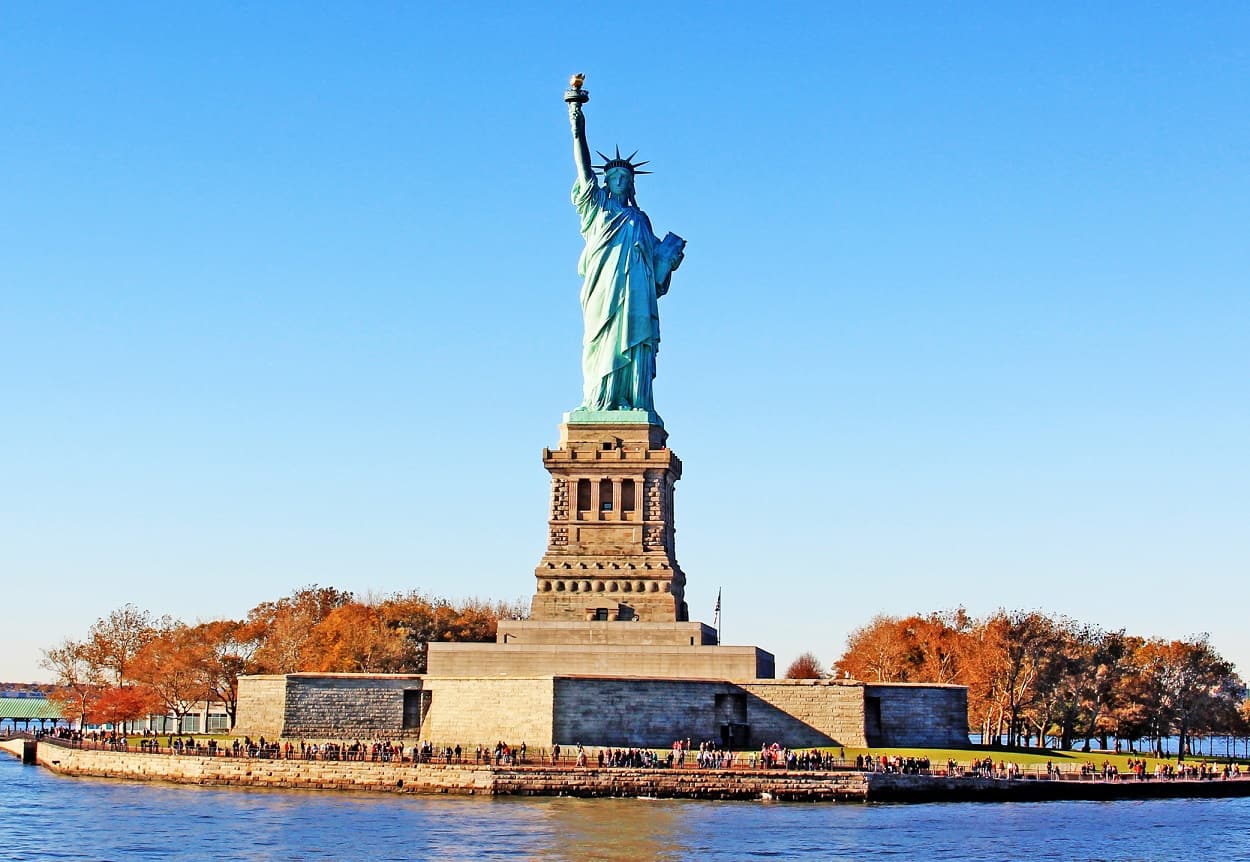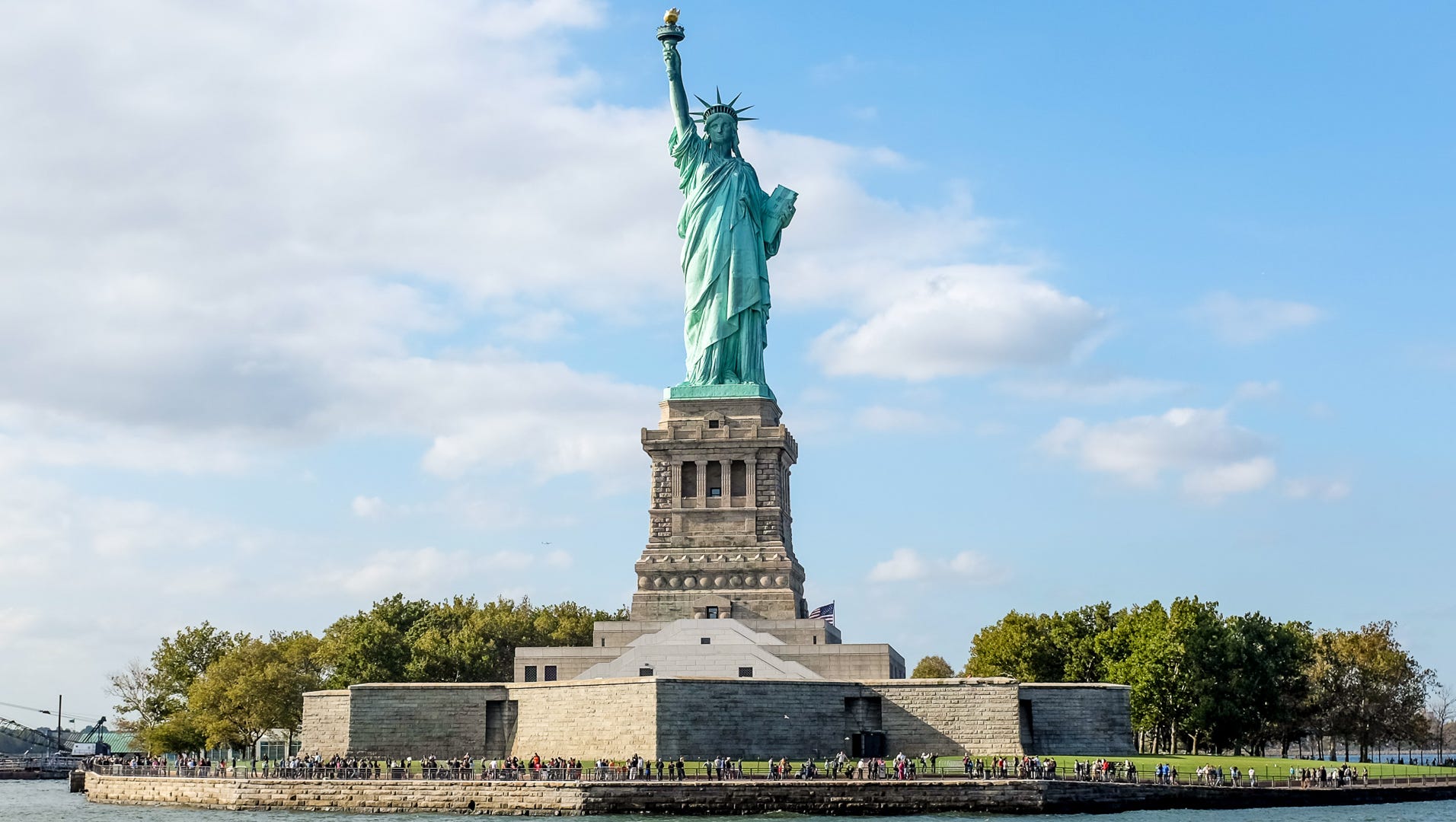
The United States of America, a land of unparalleled diversity, stretches across a continent, offering a kaleidoscope of landscapes, cultures, and experiences. From the snow-capped peaks of the Rockies to the sun-drenched beaches of Florida, from the bustling metropolises of the East Coast to the serene deserts of the Southwest, the USA is a destination that truly has something for every traveler. With its rich history, groundbreaking innovations, and breathtaking natural wonders, it’s no surprise that millions flock here annually to witness its iconic attractions.
This comprehensive guide delves into the top attractions that define the American experience, alongside essential travel tips, historical context, accommodation insights, transportation advice, and the best times to embark on your adventure.
I. A Journey Through Iconic Wonders: Top Attractions of the USA

Related Articles about The Grand Tapestry: Exploring the Top Attractions of the United States:
- Cusco: Gateway to the Sacred Valley and the Lost City of the Incas
- Jakarta: A Metropolis of Contrasts – Exploring Indonesia’s Vibrant Capital
- Romania’s Regal Retreats: Unveiling the Nation’s Finest Hotels and Unforgettable Experiences
- Seoul: A City Where Ancient Traditions Dance with Futuristic Visions
- The Jewel of Arabia: An Ultimate Travel Guide to the United Arab Emirates
The sheer number of captivating sites in the U.S. can be overwhelming, but certain attractions consistently rise to the top, representing the diverse spirit of the nation.
1. The Grand Canyon, Arizona: A testament to the awe-inspiring power of nature, the Grand Canyon is a geological marvel that defies description. Carved over millions of years by the Colorado River, its vast, multi-layered rock formations reveal billions of years of Earth’s history. Visitors can hike its challenging trails, raft the river below, or simply gaze in wonder from numerous viewpoints along its South and North Rims. Its sheer scale and profound beauty make it an unforgettable experience.
2. Yellowstone National Park, Wyoming, Montana, Idaho: America’s first national park, Yellowstone is a geothermal wonderland brimming with explosive geysers, vibrant hot springs, and abundant wildlife. Old Faithful, the park’s most famous geyser, erupts with remarkable predictability, while the Grand Prismatic Spring mesmerizes with its rainbow hues. Home to bison, elk, bears, and wolves, Yellowstone offers unparalleled opportunities for wildlife viewing and immersion in a pristine wilderness.
3. New York City, New York: The "City That Never Sleeps" is a global icon of culture, finance, and entertainment. From the towering Statue of Liberty and the vibrant energy of Times Square to the theatrical brilliance of Broadway and the serene pathways of Central Park, NYC is an endless wellspring of experiences. World-class museums like the Metropolitan Museum of Art and the Museum of Modern Art, diverse culinary scenes, and distinct neighborhoods like Greenwich Village and Harlem ensure there’s always something new to discover.
4. Washington D.C.: The nation’s capital is a monumental city steeped in history and patriotism. Home to the White House, the U.S. Capitol Building, and numerous iconic memorials (Lincoln, Jefferson, WWII, Vietnam Veterans), D.C. offers a profound journey through American democracy. The Smithsonian Institution, a complex of 19 world-class museums and galleries (most with free admission), provides endless educational opportunities, from natural history to air and space exploration.
5. Orlando, Florida: The undisputed "Theme Park Capital of the World," Orlando is a mecca for families and thrill-seekers. Walt Disney World Resort, with its four magical theme parks (Magic Kingdom, Epcot, Hollywood Studios, Animal Kingdom) and two water parks, promises enchantment. Universal Orlando Resort, home to The Wizarding World of Harry Potter, offers immersive adventures and adrenaline-pumping rides. Beyond the major parks, Orlando boasts numerous other attractions, shopping, and dining experiences.
6. San Francisco, California: Perched on rolling hills overlooking a picturesque bay, San Francisco is known for its iconic Golden Gate Bridge, historic Alcatraz Island, and charming cable cars. Its diverse neighborhoods, from the bohemian Haight-Ashbury to the bustling Fisherman’s Wharf and the vibrant Castro, each offer unique character. The city’s progressive spirit, stunning views, and culinary innovation make it a must-visit West Coast destination.
7. New Orleans, Louisiana: A city unlike any other in the U.S., New Orleans pulsates with a unique blend of French, Spanish, African, and Caribbean influences. Its historic French Quarter, with its wrought-iron balconies, jazz clubs, and vibrant street performers, is the heart of its charm. From the lively Mardi Gras celebrations to the soulful sounds of live music, delicious Creole cuisine, and historic plantations, New Orleans offers a rich cultural tapestry.
8. Maui, Hawaii: While all Hawaiian islands are enchanting, Maui often stands out for its diverse landscapes, luxurious resorts, and abundant outdoor activities. From the dramatic sunrise over Haleakalā volcano to the scenic Road to Hana, lush rainforests, and pristine beaches perfect for snorkeling, surfing, or simply relaxing, Maui embodies the paradise ideal. Its vibrant marine life, including seasonal whale watching, adds to its allure.

9. Mount Rushmore National Memorial, South Dakota: Carved into the granite face of the Black Hills, Mount Rushmore features the colossal sculptures of four U.S. presidents: George Washington, Thomas Jefferson, Theodore Roosevelt, and Abraham Lincoln. This monumental feat of engineering and artistry stands as a symbol of American democracy and freedom, attracting millions to witness its impressive scale and learn about its history.
10. Las Vegas, Nevada: The "Entertainment Capital of the World" is a dazzling oasis in the desert, famous for its grand casinos, extravagant resorts, world-class shows, and vibrant nightlife. Beyond the gambling, Vegas offers incredible dining experiences, luxury shopping, and unique attractions like the Fountains of Bellagio and the High Roller observation wheel. It’s a city designed for indulgence and spectacle.
II. A Brief History of American Tourism
The story of American tourism is deeply intertwined with the nation’s development, infrastructure, and evolving cultural identity.
In the early 19th century, travel was primarily for the wealthy elite. The "Grand Tour" for Americans often involved visiting natural wonders like Niagara Falls, Mammoth Cave, and the Hudson River Valley, alongside burgeoning cities like Boston, New York, and Philadelphia. These trips were arduous, relying on stagecoaches, steamboats, and rudimentary roads.
The mid-19th century saw the rise of the railroad, which began to democratize travel, making distant destinations more accessible. The establishment of Yellowstone as the world’s first national park in 1872 marked a pivotal moment, recognizing the value of preserving natural wonders for public enjoyment. This spurred the national park movement, creating protected areas across the West.
The early 20th century brought the automobile, revolutionizing travel. The creation of iconic routes like Route 66 fostered the American road trip culture, giving rise to motels, roadside diners, and kitschy attractions. National parks became prime destinations for car-traveling families. Air travel also began, initially as a luxury, but slowly becoming more accessible.
After World War II, the post-war economic boom and the Interstate Highway System (begun in 1956) further cemented the car as the primary mode of travel. This era saw the rise of family-friendly attractions like Disneyland (opened 1955) and later Walt Disney World (opened 1971), transforming tourism into a major industry focused on entertainment and themed experiences.
The late 20th and early 21st centuries have seen a continued diversification of American tourism, with an emphasis on cultural experiences, ecotourism, adventure travel, and niche interests. The internet and global communication have made travel planning easier and opened up the U.S. to a wider international audience, cementing its status as a top global destination.
III. Essential Travel Tips for Exploring the USA
Navigating the vastness and intricacies of the U.S. requires careful planning, especially for international visitors.
- Visa/ESTA: Most international visitors require a visa or an ESTA (Electronic System for Travel Authorization) under the Visa Waiver Program. Apply well in advance.
- Travel Insurance: Given the high cost of healthcare in the U.S., comprehensive travel insurance covering medical emergencies, trip cancellations, and baggage loss is highly recommended.
- Plan Ahead: Especially for popular attractions (National Parks, theme parks, major cities), book flights, accommodations, and even attraction tickets months in advance, particularly during peak seasons.
- Budgeting: The U.S. can be expensive. Factor in costs for accommodation, transportation (rental cars, gas, flights), food, activities, and tipping.
- Tipping Culture: Tipping is customary and expected for many services: 15-20% for restaurant servers, bartenders, and taxi drivers; $1-2 per bag for bellhops; $2-5 per night for housekeepers.
- Driving: If you plan to explore outside major cities, a rental car is often essential. Be aware of varying state driving laws, speed limits, and the sheer distances between destinations. An international driving permit may be required alongside your home license.
- Connectivity: Purchase a local SIM card or an e-SIM plan upon arrival for reliable internet and phone service. Wi-Fi is widely available in hotels and public places.
- Packing: Pack for diverse climates. Even within a single state, temperatures can vary wildly. Layers are key.
- Safety: While generally safe, be aware of your surroundings, especially in crowded tourist areas or at night. Keep valuables secure and be mindful of local advisories.
- Credit Cards: Credit cards are widely accepted, but it’s good to have some cash for small purchases or emergencies. Inform your bank of your travel plans to avoid card freezes.
IV. Accommodation Options: A Home Away From Home
The U.S. offers an extensive range of accommodation options to suit every budget and travel style.
- Hotels: From luxurious five-star resorts (e.g., Four Seasons, Ritz-Carlton) to mid-range chains (e.g., Marriott, Hilton, Hyatt) and budget-friendly options (e.g., Motel 6, Super 8), hotels are ubiquitous. They often offer amenities like pools, gyms, and complimentary breakfast.
- Motels: Historically prevalent along highways, motels offer basic, often affordable lodging with convenient parking, ideal for road trippers.
- Vacation Rentals: Platforms like Airbnb, VRBO, and HomeAway allow travelers to rent apartments, houses, or rooms, offering a more local experience, often with kitchens and more space, ideal for families or longer stays.
- Hostels: Primarily found in major cities and popular tourist hubs, hostels offer budget-friendly dormitory-style rooms (and sometimes private rooms), communal spaces, and a social atmosphere, popular with solo and budget travelers.
- Camping and RV Parks: For nature lovers, national and state parks, as well as private campgrounds, offer tent sites and RV hookups, providing an immersive outdoor experience. Book well in advance, especially for popular parks.
- Bed & Breakfasts (B&Bs): These charming, often historic properties offer personalized service, unique decor, and a home-cooked breakfast, providing a more intimate lodging experience.
- Unique Stays: From treehouses and glamping tents to boutique hotels and historic inns, there are countless unique lodging options for those seeking something out of the ordinary.
V. Navigating the Nation: Transportation Across the USA
Given its immense size, understanding transportation options is crucial for planning an efficient itinerary.
- Air Travel: For covering long distances, flying is the most practical and often the most time-efficient option. Major airlines like Delta, United, American, Southwest, and Alaska Airlines operate extensive domestic networks. Booking in advance usually yields better prices.
- Car Rentals: The quintessential American travel experience, renting a car offers unparalleled flexibility, especially for exploring national parks, rural areas, and embarking on road trips. Most major airports have multiple rental car agencies. Be aware of fuel costs, tolls, and parking fees, which can add up.
- Buses: Companies like Greyhound offer extensive intercity bus services, providing a budget-friendly option for traveling between cities. While slower than flying, it can be a scenic way to see the country.
- Trains (Amtrak): Amtrak provides passenger rail service across the U.S., offering a more relaxed and scenic way to travel than flying or driving, though it’s generally slower and less extensive than European rail networks. Popular routes include the California Zephyr (Chicago to San Francisco) and the Coast Starlight (Seattle to Los Angeles).
- Public Transportation (Cities): Major cities like New York, Washington D.C., Boston, Chicago, and San Francisco have extensive subway and bus systems, making it easy to get around without a car. Other cities may have more limited public transit, often relying on bus networks.
- Ride-Sharing Services: Uber and Lyft are widely available in most cities and larger towns, offering convenient on-demand transportation.
VI. The Rhythms of Travel: Best Time to Visit the USA
The best time to visit the U.S. largely depends on your desired destinations and activities, as the country experiences a wide range of climates.
-
Spring (March to May): Generally mild temperatures make spring an excellent time to visit many regions.
- Southwest (Grand Canyon, Zion): Pleasant hiking weather before the intense summer heat.
- Southeast (Florida, New Orleans): Warm but not excessively hot or humid, beautiful blooming flowers. Avoid "Spring Break" periods if you prefer fewer crowds.
- Cherry Blossom season in Washington D.C. is a major draw.
- California: Mild temperatures along the coast, blooming wildflowers inland.
-
Summer (June to August): Peak tourist season, characterized by warm to hot temperatures and larger crowds.
- National Parks (Yellowstone, Yosemite, Glacier): All facilities are open, and weather is ideal for hiking and outdoor activities.
- Northeast and Pacific Northwest: Pleasant, warm weather, perfect for exploring cities and coastal areas.
- Avoid the deep South and desert Southwest if you’re sensitive to extreme heat and humidity.
-
Fall (September to November): Often considered one of the most beautiful times to visit, with comfortable temperatures and stunning foliage.
- Northeast and Mid-Atlantic: Spectacular fall foliage displays, especially in New England.
- California and the West: Still excellent weather for outdoor activities and city exploration.
- South: Humidity begins to drop, making it more comfortable.
- Crowds at major attractions start to thin after Labor Day.
-
Winter (December to February): Offers unique experiences, from snowy landscapes to warm-weather escapes.
- Skiing and Snowboarding: Rocky Mountains (Colorado, Utah), Northeast (Vermont, New Hampshire).
- Warm Escapes: Florida, Southern California, Hawaii offer mild to warm temperatures, perfect for beach holidays.
- Festive Cities: New York City and other major urban centers are magical with holiday decorations and events.
- Many national parks in colder regions may have limited access due to snow.
Ultimately, researching the specific climate of your chosen destinations for your travel dates is the best approach to ensure an enjoyable trip.
Conclusion
The United States is a land of endless discovery, a vast and vibrant tapestry woven with natural wonders, historic landmarks, pulsating cities, and diverse cultures. From the timeless grandeur of the Grand Canyon to the electrifying energy of New York City, each attraction offers a unique glimpse into the American spirit. By understanding its history, planning meticulously, and embracing the adventure, travelers can embark on an unforgettable journey through a nation that truly has it all. So pack your bags, prepare your itinerary, and get ready to explore the grand tapestry of the United States.





